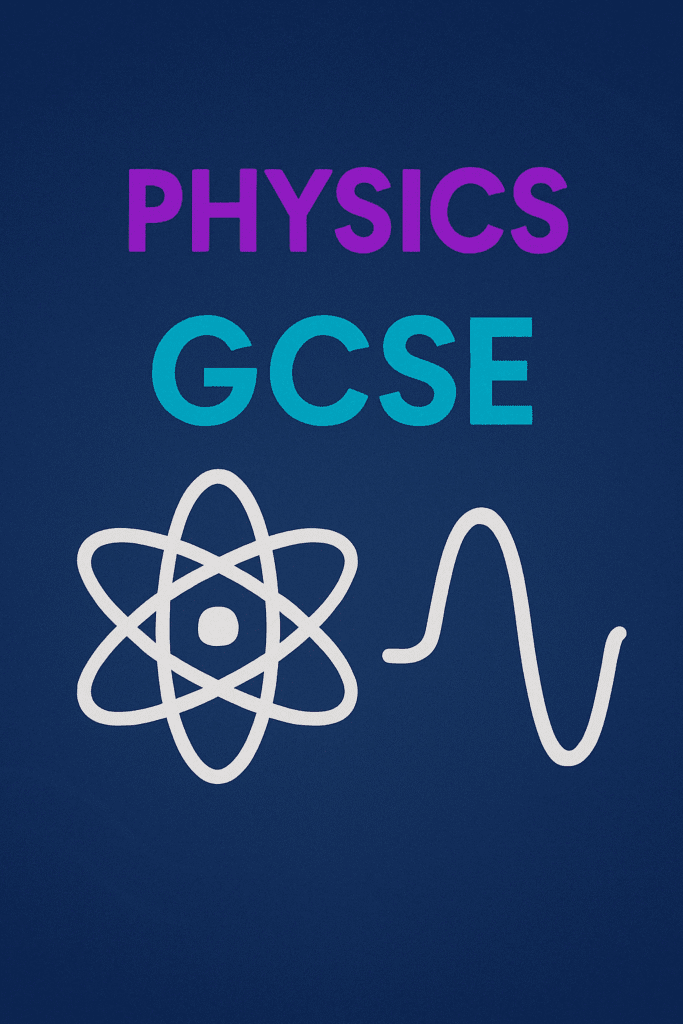Reading Time: < 1 minute
Table of Contents
ToggleEnergy and Efficiency
Introduction
Energy is a fundamental concept in GCSE Physics, describing how it’s transferred, stored, and used. Efficiency measures how effectively energy is utilised, helping us minimise waste and maximise output.
This article will cover:
- Energy stores and transfers.
- Efficiency and its calculation.
- Real-life applications in technology and sustainability.
Energy Stores and Transfers
Energy Stores
Energy exists in various forms, including:
- Kinetic Energy: Energy of motion (
 )
) - Gravitational Potential Energy: Stored due to position (
 )
) - Elastic Energy: Stored in stretched or compressed materials
- Thermal Energy: Stored in hot objects
Energy Transfers
Energy moves between stores via:
- Heating: Energy transfer by conduction, convection, or radiation
- Forces: Work done when an object moves
- Electricity: Energy carried by moving charges
- Kinetic Energy: Energy of motion (
Efficiency and Its Calculation
Efficiency measures how much input energy is converted into useful output.
Formula:
![Rendered by QuickLaTeX.com \[ \text{Efficiency} = \frac{\text{Useful energy output}}{\text{Total energy input}} \times 100 \]](data:image/svg+xml;base64,PHN2ZyB4bWxucz0iaHR0cDovL3d3dy53My5vcmcvMjAwMC9zdmciIHdpZHRoPSIzMTQiIGhlaWdodD0iNDEiIHZpZXdCb3g9IjAgMCAzMTQgNDEiPjxyZWN0IHdpZHRoPSIxMDAlIiBoZWlnaHQ9IjEwMCUiIHN0eWxlPSJmaWxsOiNjZmQ0ZGI7ZmlsbC1vcGFjaXR5OiAwLjE7Ii8+PC9zdmc+)
Example: A lamp converts 100J of electrical energy into 75J of light.
![Rendered by QuickLaTeX.com \[ \text{Efficiency} = \frac{75}{100} \times 100 = 75\% \]](data:image/svg+xml;base64,PHN2ZyB4bWxucz0iaHR0cDovL3d3dy53My5vcmcvMjAwMC9zdmciIHdpZHRoPSIyMzMiIGhlaWdodD0iMzciIHZpZXdCb3g9IjAgMCAyMzMgMzciPjxyZWN0IHdpZHRoPSIxMDAlIiBoZWlnaHQ9IjEwMCUiIHN0eWxlPSJmaWxsOiNjZmQ0ZGI7ZmlsbC1vcGFjaXR5OiAwLjE7Ii8+PC9zdmc+)
Real-Life Applications
- Renewable Energy: Solar panels and wind turbines aim to improve efficiency
- Home Insulation: Reduces thermal energy loss, saving costs and energy
- Vehicles: Hybrid and electric cars optimise energy use to reduce emissions
Conclusion
Understanding energy transfers and efficiency is essential for tackling GCSE Physics exams and appreciating sustainability efforts. Practise calculating efficiency and identifying energy transfers in various systems.



